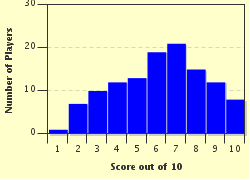Quiz Answer Key and Fun Facts
1. San Francisco's most iconic landmark is no doubt the Golden Gate Bridge. Construction began in 1907 to replace an earlier bridge which was destroyed by the 1906 earthquake. It took 10 years to build before it was finally inaugurated in 1917.
2. Today Alcatraz Island is San Francisco's most visited tourist attraction. It was first used as a fortress and a military prison. From 1933 till 1963 it served as a Federal Penitentiary. Which of these notorious criminals was never imprisoned in Alcatraz?
3. Lombard Street is known as the crookedest street in the world although only one block is really crooked. Along the slopes of which of San Francisco's hills do we find the crookedest part of Lombard Street?
4. Which pier, located on the eastern edge of Fisherman's Wharf, was turned into a bilevel marketplace where you can find a host of tourist shops, restaurants, confectioneries and a carousel?
5. What is the name of the tower built on the summit of Telegraph Hill from which you have a panoramic view of the city and the bay?
6. Two neighborhoods definitely worth a visit are Chinatown and North Beach. Between City Lights Bookstore and Vesuvio Café, North Beach is connected with Chinatown through which alley, aptly named after the author of "On the Road"?
7. No visit to San Francisco is complete without a ride on the iconic cable cars. However, San Francisco residents had no faith in the system when it was first launched in 1873. What nickname was given to the transportation system, based on the name of the inventor?
8. This newly developed district, located in the heart of South of Market, is considered the cultural center of San Francisco. It is named after the original settlement that became San Francisco.
9. Officially called Mission San Francisco de Asis, what is the more popular name of San Francisco's oldest building?
10. Which neighborhood is known for its Victorian houses and was the center of the hippie movement in the '60s?
Source: Author
AlonsoKing
This quiz was reviewed by FunTrivia editor
spanishliz before going online.
Any errors found in FunTrivia content are routinely corrected through our feedback system.

